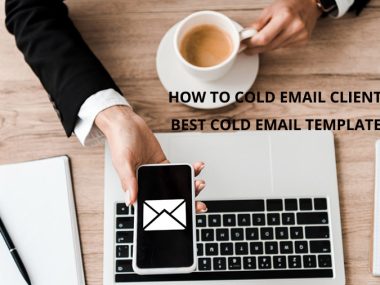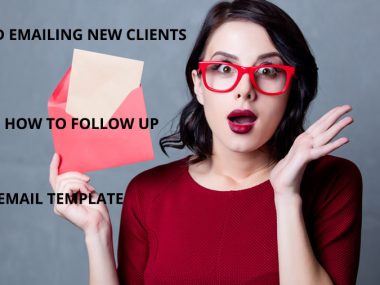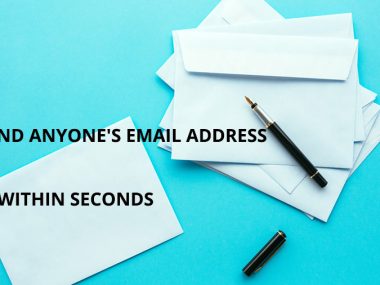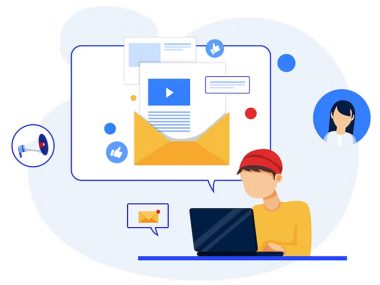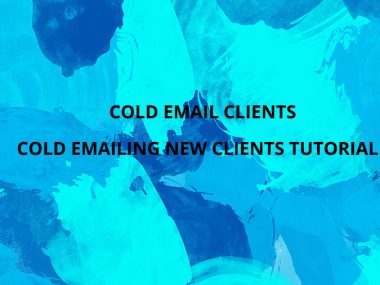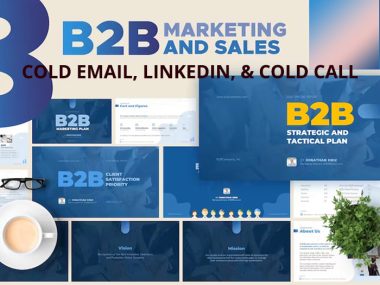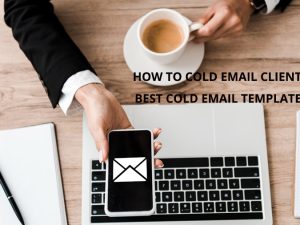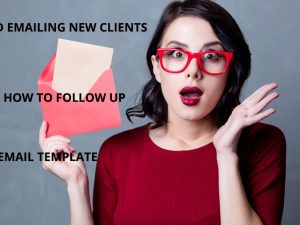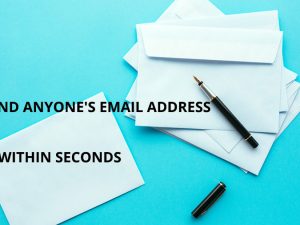When I embarked on my sales career, a significant part of my role was generating appointments with my ideal clients. The challenge was apparent—how could I convince strangers, who had no awareness of me or my offerings, to dedicate their precious time for a meeting? Seeking guidance from more experienced colleagues often resulted in vague suggestions like “try a cold call” or “send a cold email,” leaving me without a clear, step-by-step roadmap for these activities.
Determined to find a solution, I invested hours scouring Google, watching videos, and experimenting with various strategies gleaned from online sources. While many attempts failed, perseverance and a great deal of trial and error eventually led me to discover effective methods. Soon enough, my calendar was overflowing with meetings, signaling the success of a refined strategy.
In this article, I aim to share some of my most successful strategies for cold emailing and LinkedIn messaging. These techniques, though distinct, share fundamental principles. Having taught these strategies to thousands of students worldwide, I’ve witnessed success stories like Benjamin’s, who, after just two weeks of trial, secured a meeting with Singapore Airlines—an accomplishment he deemed unprecedented in his sales career.
The following are some of the best strategies for cold emailing and sending LinkedIn messages to secure meetings with potential clients. These tried-and-tested approaches, if applied correctly, can yield remarkable results, saving you valuable time and avoiding the frustrations associated with trial and error.
Understanding Outbound Lead Generation Strategies
Whether using cold email or LinkedIn messages, the core strategies for crafting messages and identifying potential customers remain consistent. The focus here is on outbound lead generation, where you reach out to individuals who are unfamiliar with your offerings. The first critical question to address is “who.”
- Define Your Target Audience:
When engaging in outbound prospecting, clarity on your target audience is paramount. Avoid the common mistake of crafting lengthy messages detailing all your offerings. Instead, reverse the situation by making it clear why a prospect should work with you. Narrow down your message to address a specific pain point, making it easier for the recipient to recognize the value you bring.
Example:
Consider an app development agency reaching out to a big brand like Mattel. Rather than listing various services, focus on a specific problem they might have, such as developing games for the app store. Tailor your message to highlight how your expertise in monetizing audiences through game development can benefit their brand.
- Why Now and What Value:
The second crucial question revolves around “why.” Why should someone take a meeting with you, and why should they do it now? Introduce a sense of urgency to prompt action. The “why now” aspect can be illustrated by emphasizing the current market trends and the advantages of being an early mover. Clearly articulate the value you provide, linking it to the prospect’s pain points and needs.
Example:
Continuing with the app development agency example, highlight the current rise in mobile usage, emphasizing that developing a mobile game now offers a unique opportunity due to the growing mobile market. Stress the advantages of being an early entrant and how your services can help the prospect capitalize on this trend.
By seamlessly integrating these elements defining your target audience, addressing their pain points, creating urgency, and showcasing your value proposition you can craft compelling cold emails and LinkedIn messages. These strategies, when properly applied, have proven successful in securing meetings with potential clients, as evident from real-world success stories. The key lies in consistently refining your approach based on feedback and results, ultimately finding the winning formula for your specific product or service.
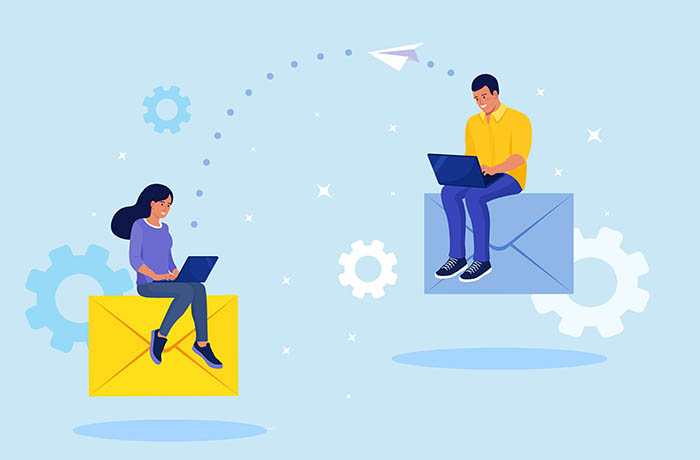
Cold Email & LinkedIn Marketing – Best Strategies for Lead Generation
Summery:
- Targeted Outbound Lead Generation:
Whether through cold email or LinkedIn messages, the core strategies remain the same. The first step is defining your audience. Instead of presenting a laundry list of services, focus on a specific use case or pain point that your potential client might be experiencing. This approach reduces fatigue for the recipient and increases the chances of a positive response. - Identifying the “Who” – Narrowing Down Your Audience:
Determine who your ideal client is and what pain points you can address. Avoid the common mistake of offering too many solutions in one message. Instead, be specific about the problem you solve and make it evident why your solution is exactly what they need. Personalization is key to engaging your audience. - Crafting a Compelling “Why”:
The next critical question to answer is why someone should take a meeting with you and why now. Creating a sense of urgency is crucial. Highlight the immediate benefits of engaging with your services. For instance, if you provide app development, emphasize the advantages of entering the mobile game market early, capturing a first-mover advantage and less competition. - Adding Value and Urgency:
Explain the value of your services, emphasizing the potential for profitability, brand growth, and customer satisfaction. Demonstrate how acting now provides a strategic advantage. The combination of immediate benefits and long-term value will make your proposition more compelling. - Crafting Persuasive Messages:
Craft your cold email or LinkedIn message with these elements in mind. Clearly define who you are, what pain points you can solve, and why the prospect should act now. Keep the message concise, engaging, and focused on the recipient’s needs. - Trial and Error:
Not every message will hit the mark immediately. Embrace the trial-and-error process. If your messages aren’t receiving responses, analyze which part of your approach might be lacking, tweak it, and try again. Continuous refinement is key to discovering the winning formula for your specific product or service.
Success Story:
One success story from a student, Benjamin, illustrates the effectiveness of these strategies. After two weeks of applying the learned techniques, Benjamin secured a meeting with Singapore Airlines. Tailoring your outreach using the principles mentioned can yield significant results, even with prominent clients.
Conclusion:
Mastering cold email and LinkedIn outreach is an art that requires a deep understanding of your audience, their pain points, and how your solution adds value. By addressing the “who,” “why,” and “what” in your messages, you increase the chances of capturing your prospect’s attention and securing valuable meetings. Consistent refinement and personalized communication are key elements of a successful lead generation strategy.
Frequently Asked Questions:
Q1: How long should a cold email or LinkedIn message be?
A: Keep your messages concise and to the point. Aim for clarity and brevity to ensure your prospect engages with the content quickly.
Q2: Is it advisable to follow up multiple times?
A: Yes, follow-ups are crucial. However, strike a balance and avoid being overly persistent. Follow up two or three times with reasonable intervals.
Q3: Should I include attachments in cold emails or LinkedIn messages?
A: It’s recommended to avoid attachments in initial outreach. Keep your messages focused on the recipient and their needs, saving detailed information for follow-up discussions.
Q4: How do I handle rejection or non-responses?
A: Understand that not every outreach will result in a positive response. Use non-responses or rejections as opportunities to refine your approach and messaging.
Q5: What tools or software can assist in cold email and LinkedIn outreach?
A: Several tools, such as outreach.io, Mailshake, and reply.io, offer features for automating and tracking cold email campaigns. Choose based on your specific needs and preferences.

